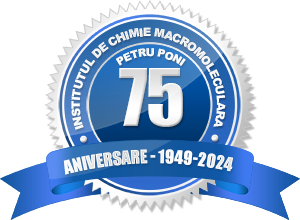Project page: https://www.icmpp.ro/epoxyphosdeg/
Polymeric materials are continuously replacing traditional ones. These materials easily ignite and rapidly spread flames, releasing highly toxic and corrosive gases. Along greenhouse effect gases, many other toxic gases and compounds are generated during uncontrolled fire spread, such as carbon monoxide, hydrogen cyanide, dioxins, furans and corrosive gases: sulfur dioxide, nitrogen oxides, hydrochloric acid and aldehydes. Reducing fire risk leads to a significant decrease of toxic emissions. Volatile phosphorylated compounds are among the most effective combustion inhibitors, since phosphorus-based radicals are five times more effective than bromine, ten times more effective than chlorine radicals, and far less toxic than both. Since 2006, when the European Union restricted hazardous compounds, the need of developing halogen free fire-resistant materials emerged.
The originality and innovation of the project objectives consist in the synthesis of new flame retardant semi-interpenetrating polymer networks based on a cross-linked epoxy network with three different curing agents and phosphorus containing aromatic polyester, as potential coating materials, correlation of their different thermal and UV accelerated aging decomposition mechanisms with the materials flame retardant capacity for outdoor exposure (on which no literature was found) and the forming of a group in new interdisciplinary approach for developing a future subdomain in characterizing coating materials resistant to environmental factors. The project relevance reflects on fundamental and applicative knowledge, educational area, by creating new international interdisciplinary research collaboration opportunities, technological research area, by generating guidelines for material design, and economic domain, by providing fundamental and experimental know-how for possible future sustainment of technological transfer to companies. |








